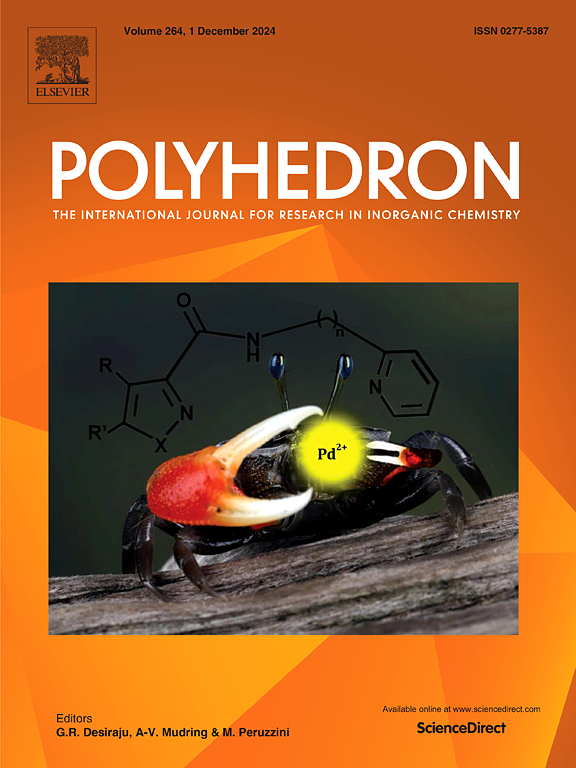利用吸附和光催化的协同效应构建纳米花状半导体-绝缘体 SrCO3/SrTiO3 异质结光催化剂以高效去除 TC
IF 2.4
3区 化学
Q2 CHEMISTRY, INORGANIC & NUCLEAR
引用次数: 0
摘要
本文章由计算机程序翻译,如有差异,请以英文原文为准。

Constructing nanoflower-like semiconductor–insulator SrCO3/SrTiO3 heterojunction photocatalyst for the efficient removal of TC by the synergistic effect of adsorption and photocatalysis
A combination of adsorption and photocatalysis is a promising method to degrade organic pollutants. Herein, the work adopts SrTiO3 semiconductor coupled with insulator SrCO3 via an in-situ solvent method to construct a heterojunction with built-in electric field (IEF) photocatalyst, which improves excellently the electrons-holes (h+-e-) separation and adsorption performance on SrTiO3. The close heterojunction and the IEF formed at the heterojunction interface enhance the transfer and separation of photogenerated carriers, generating more active substances. Meanwhile, the unique nanoflower structure of SrCO3/SrTiO3 and the introduction of SrCO3 provide more adsorption sites and active centers, which is conducive to the adsorption and activation of TC. Thus, the maximum adsorption capacity of SrCO3/SrTiO3 could be up to 47.15 mg/g-1 within 30 min. Compared with pure SrTiO3, SrCO3/SrTiO3 exhibited the excellent removal of tetracycline hydrochloride (TC) (120 min, 90.5 %) via the synergistic effect of adsorption and photocatalysis under visible light, and its photocatalytic reaction rate was 24.79 and 3 times higher than SrCO3 and SrTO3, individually. h+and •O2– played a pivotal role in TC degradation. Additionally, the adsorption behavior of TC on SrCO3/SrTiO3 composite and the photocatalytic degradation mechanism of SrCO3/SrTiO3 were investigated in detail. This work provides a new idea for improving the photocatalytic performance of SrTiO3 and the application of insulators in photocatalysis.
求助全文
通过发布文献求助,成功后即可免费获取论文全文。
去求助
来源期刊

Polyhedron
化学-晶体学
CiteScore
4.90
自引率
7.70%
发文量
515
审稿时长
2 months
期刊介绍:
Polyhedron publishes original, fundamental, experimental and theoretical work of the highest quality in all the major areas of inorganic chemistry. This includes synthetic chemistry, coordination chemistry, organometallic chemistry, bioinorganic chemistry, and solid-state and materials chemistry.
Papers should be significant pieces of work, and all new compounds must be appropriately characterized. The inclusion of single-crystal X-ray structural data is strongly encouraged, but papers reporting only the X-ray structure determination of a single compound will usually not be considered. Papers on solid-state or materials chemistry will be expected to have a significant molecular chemistry component (such as the synthesis and characterization of the molecular precursors and/or a systematic study of the use of different precursors or reaction conditions) or demonstrate a cutting-edge application (for example inorganic materials for energy applications). Papers dealing only with stability constants are not considered.
 求助内容:
求助内容: 应助结果提醒方式:
应助结果提醒方式:


